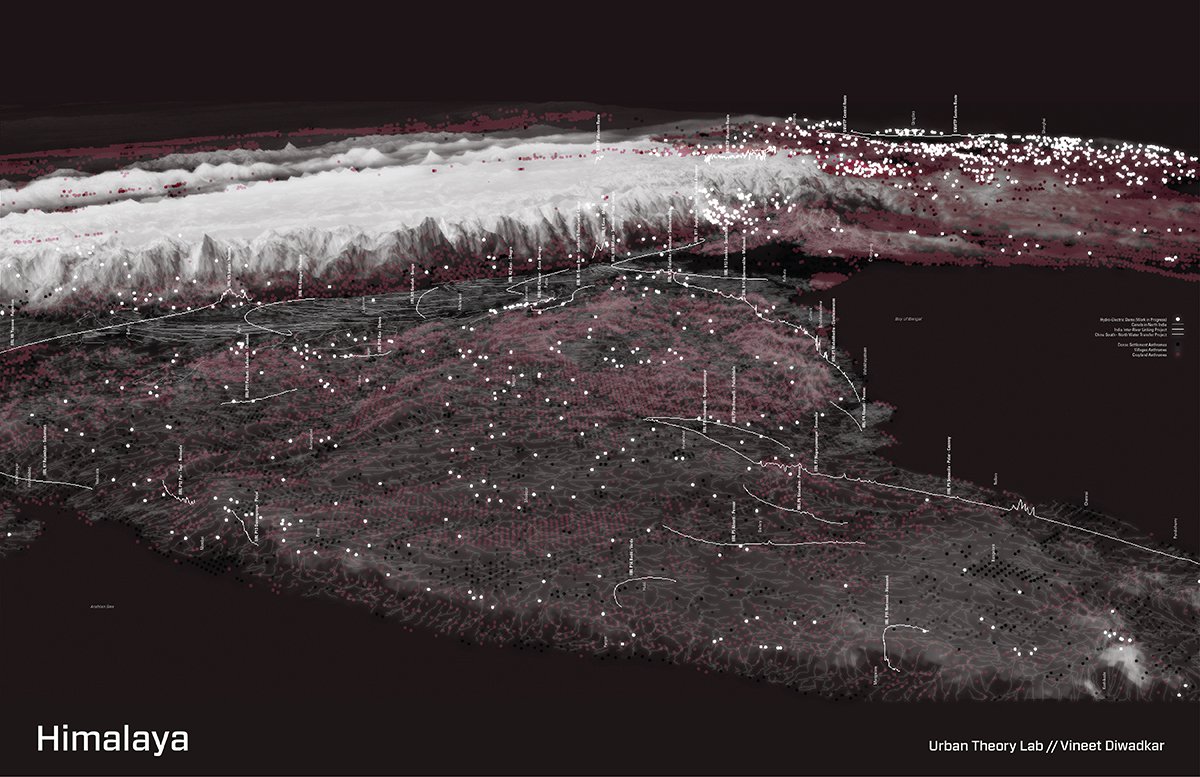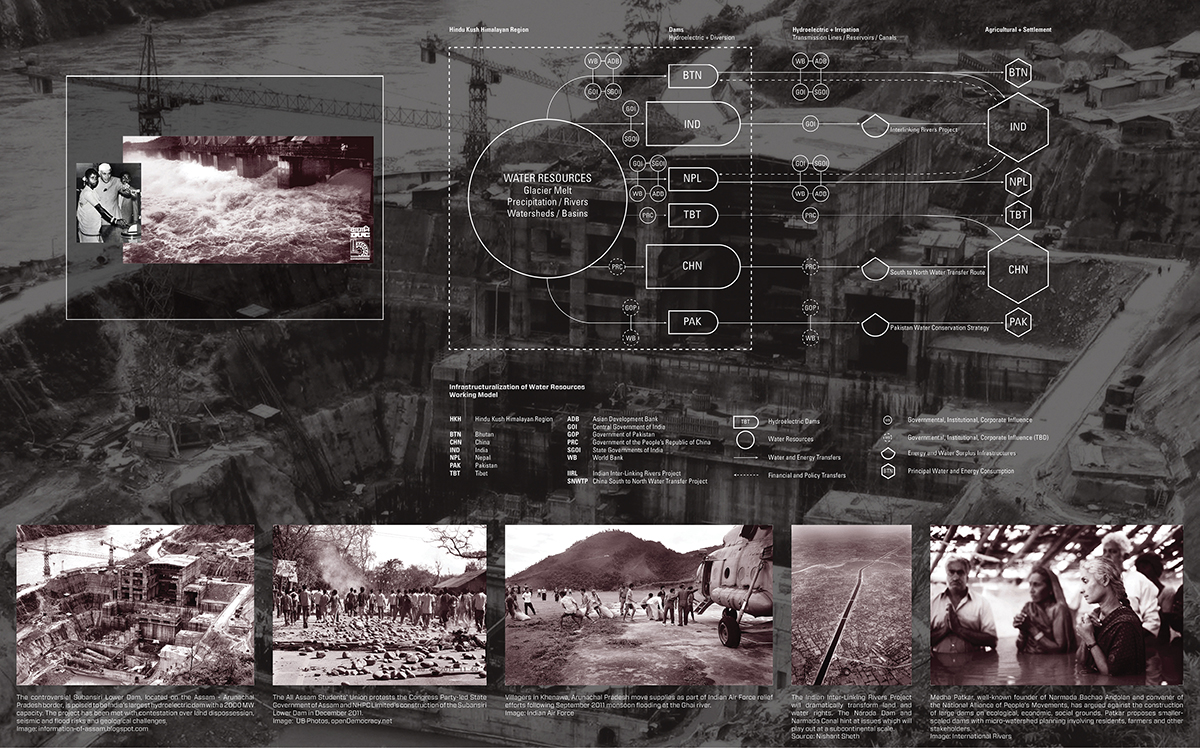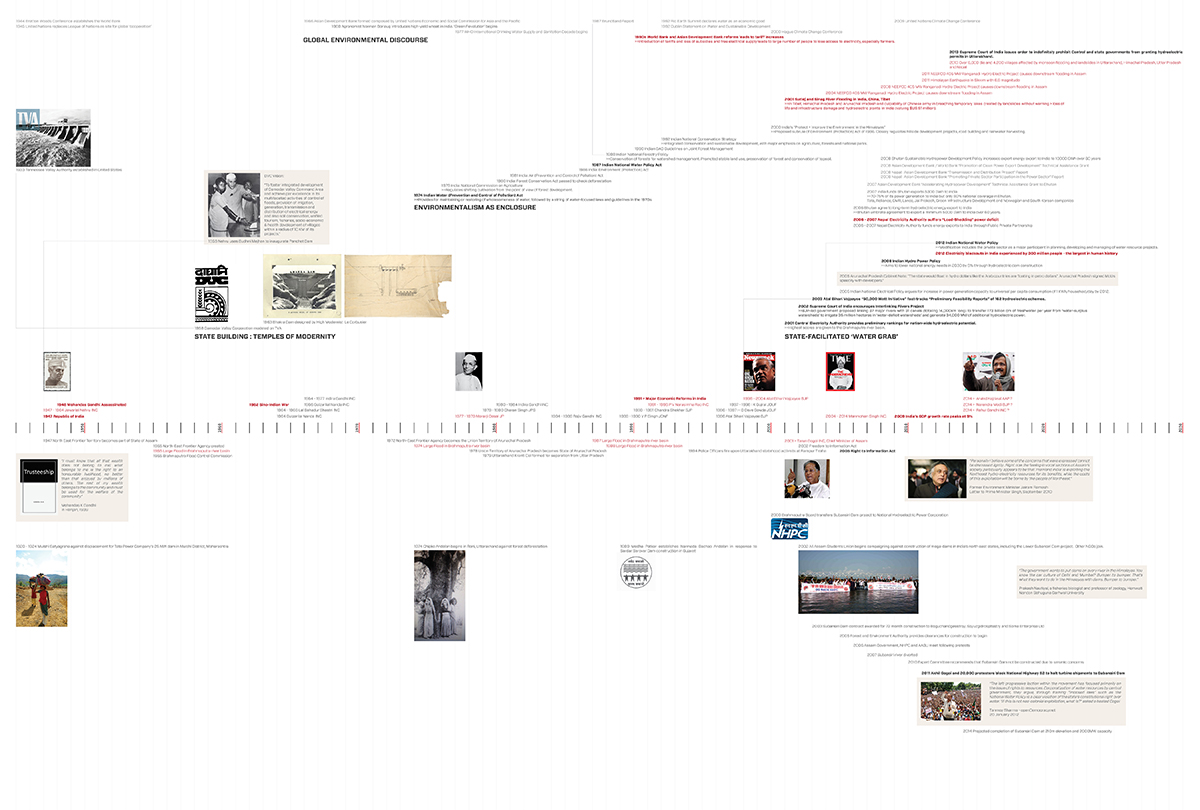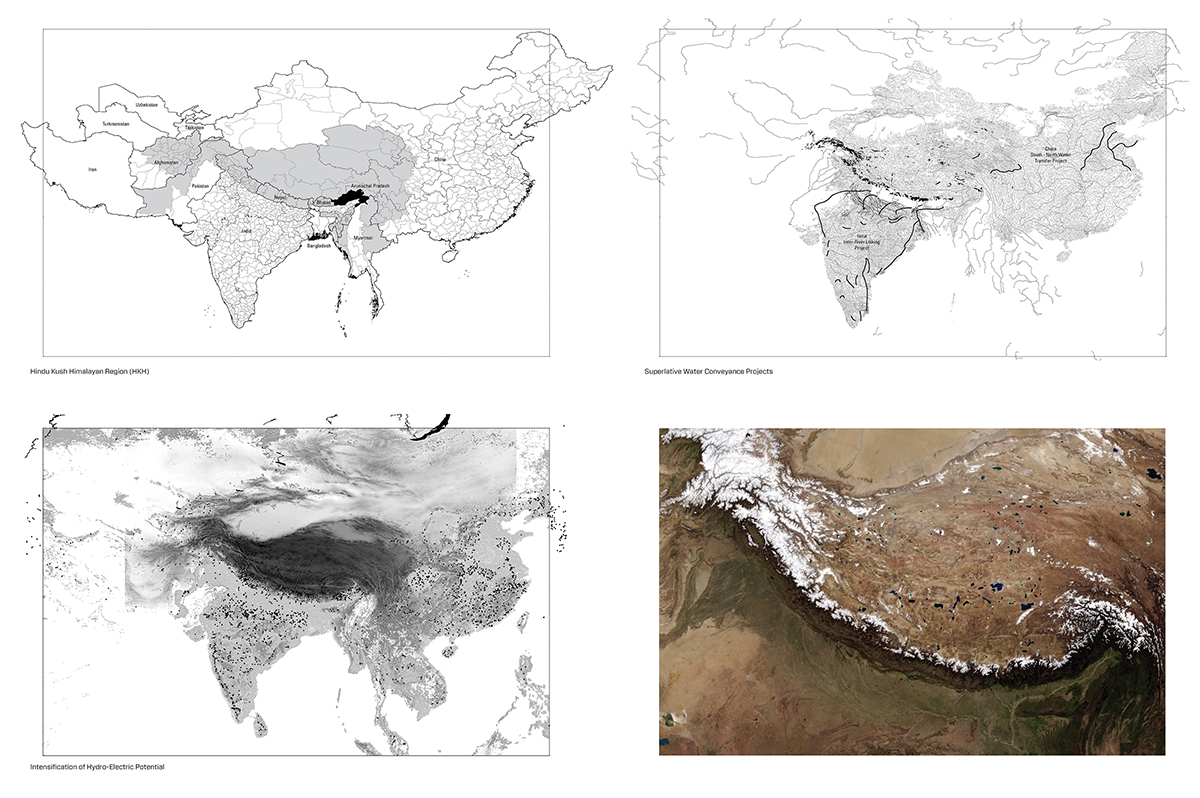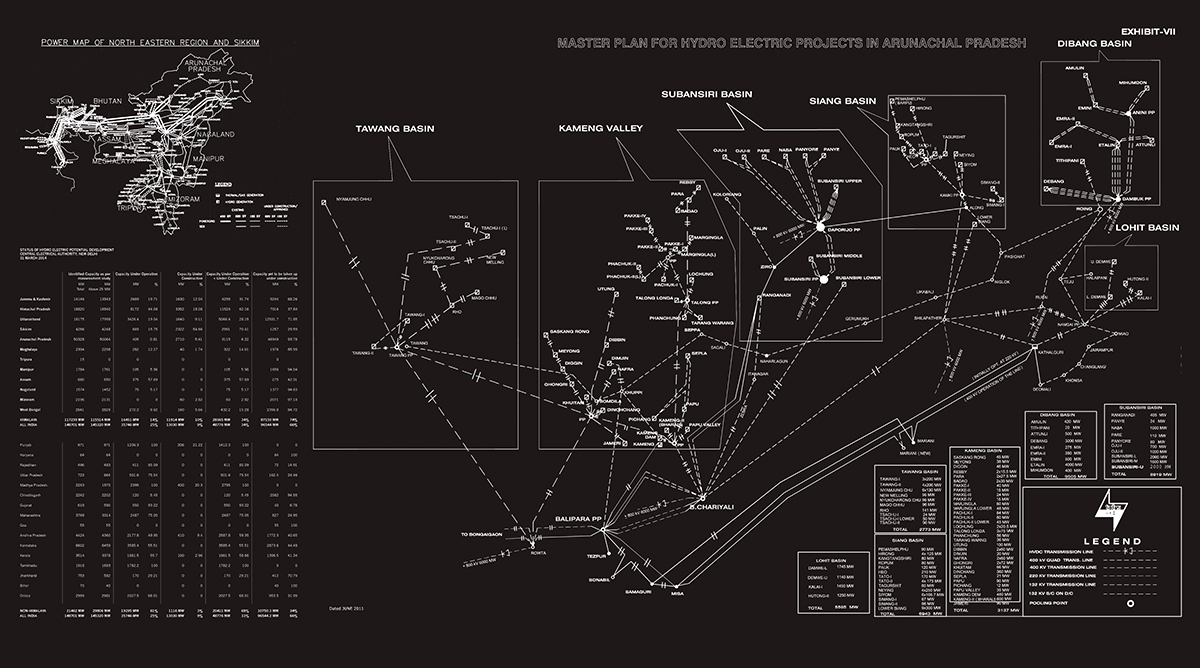Himalaya: Extreme Territories of Urbanization
This project subjects the theory of extended urbanization to “extreme stress” by applying it to zones and conditions that are commonly thought to lie outside the urban condition, in this case, the Himalayas. Through a combination of historical analysis, critical geopolitical economy, geospatial data visualization and conceptual experimentation, the research aims to extend the analytical and political horizons of urban theory into these “extreme territories” of urbanization.
RESEARCHER
Vineet Diwadkar as part of the Urban Theory Lab, led by Neil Brenner
EXHIBITIONS
Bi-City Biennale of Architecture / Urbanism 2016
Yale University School of Architecture 2015
University of Melbourne 2015
PRESS
Review (FR), Louise Dorignon for Urbanités.
Review (EN), Louise Dorignon for Society & Space.
Himalaya: Extended Territories of Urbanization, produced as part of the Urban Theory Lab
The conversion of rivers and glacial ice into storage, energy, and irrigation infrastructure is at the core of the colonization of the Hindu Kush Himalaya into national, regional, and globally-oriented market regimes. Superlative national water conveyance projects such as India’s Interlinking Rivers Project (ILRP) are fundamentally transforming hydrology and ecosystems, settlement, and land use intensification, the nature of citizenship and governance strategies. In the Indian case it is clear that post-2002 restructuring of central and state-scaled water policies encouraged the privatization of planning, construction, and management of hydrological interventions.
Regulatory transformations have enabled shifts in scale and attitudes towards large water projects. Central and state government acts, along with political brokering, MOUs and institutional white papers, suggest restructuring of state relationships with other states, internal actors, large corporations, and international financial and consultancy organizations.
Shenzhen Bi-City Biennale of Architecture / Urbanism
In collaboration with Christian Schmid and Milica Topalovic of the ETH Zurich and the Future Cities Lab (FCL) Singapore, the UTL contributed to an exhibition on "Cartographies of Planetary Urbanization" at the Shenzhen Biennale. The agenda is summarized below:
Today, urbanization has become planetary. The boundaries of the urban have been exploded to encompass vast territories far beyond the limits of even the largest mega-city regions. Meanwhile, novel patterns of urbanization are crystallising that challenge inherited conceptions of the urban as a bounded, universal settlement type. This exhibit proposes a radical rethinking of inherited cartographies of the urban. The popular claim that we now live in an 'urban age' because the world's majority population lives in ‘cities’ is a deeply misleading basis for understanding the contemporary “urban revolution” theorised by Henri Lefebvre. Cities are not isolated manifestations or universally replicated expressions of the urban condition, but are embedded within wider, territorially uneven and restlessly evolving processes of urbanization at all spatial scales, encompassing both built and unbuilt spaces, across earth, water, sea and atmosphere. In this exhibit, interdisciplinary research teams from the ETH Zürich, ETH Future Cities Laboratory Singapore and the Urban Theory Lab at the Harvard Graduate School of Design present new frameworks for understanding and representing contemporary forms of urbanization.
The exhibition highlights the interplay between (a) the search for new theoretical concepts, (b) territorially grounded studies of specific patterns and pathways of urbanization and (c) the use of cartography to decipher new geographies of urbanization for which we currently lack an adequate analytical or representational vocabulary.
Bi-City Biennale of Architecture / Urbanism, Shenzhen, 2015-2016
Operational Landscapes Exhibition at Melbourne School of Design
The Urban Theory Lab recently opened their exhibition "Operational Landscapes" at the Melbourne School of Design (MSD). The exhibition asks: In what sense do we today live in an "urban age"? Frequently invoked by scholars, policy-makers, planners, designers, and architects, usually with reference to the proposition that more than 50 percent of the world's population now lives within cities, such a question provokes further questioning: Can the nature of our urban world be understood and mapped exclusively with reference to the growth of cities and their populations?
The exhibition turns this proposition upside-down and inside-out by speculating on a radically alternative mapping of contemporary planetary urbanization. What happens to our cognitive map of the global urban condition if we focus not on the global cities or megacities of the world, but on the wide-ranging sociospatial and environmental transformations that are currently unfolding in supposedly "remote" or "wilderness" regions such as the Amazon, the Arctic, the Gobi desert steppe, the Himalayas, the Pacific Ocean, the Sahara desert, and Siberia, and even the earth's atmosphere? To what degree are such zones now being integrated within a worldwide fabric of urbanization? How are they being restructured and enclosed to support the energy, water, material, food and logistics needs of major cities?
Through speculative cartographies of these emergent "operational landscapes," the exhibition aims to illuminate the radical transformations of land-use, infrastructure, and ecology far beyond the city limits that have made the contemporary formation of planetary urbanization possible.
Operational Landscapes, University of Melbourne, 2015
